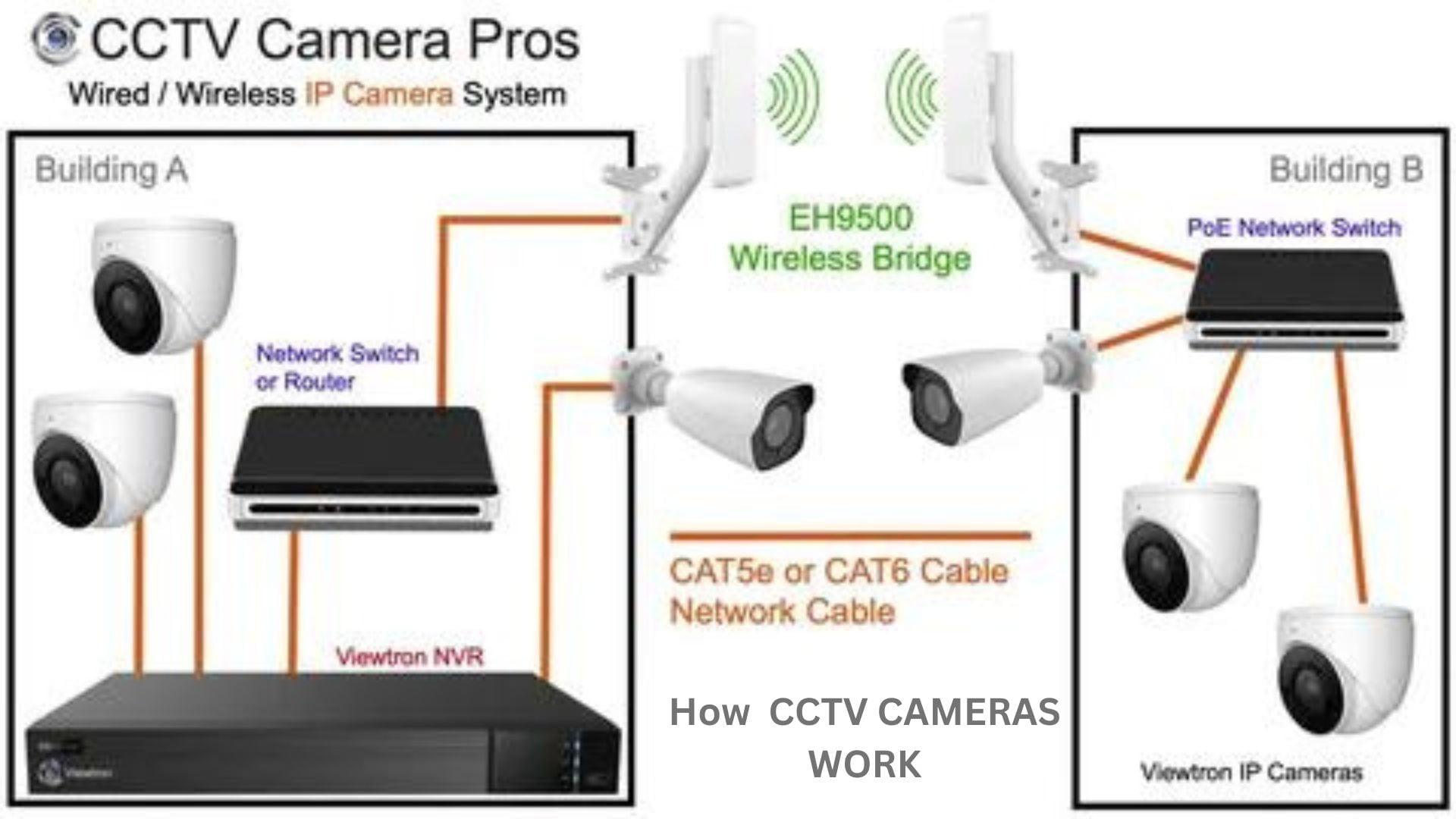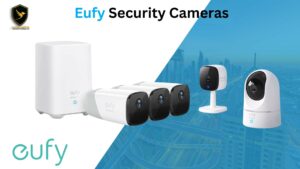What is CCTV Camera and how do cctv camera works
A CCTV camera is a type of camera that is used for tracking and recording in a selected location. It is a device in which video footage captured by the digicam is transmitted to a constrained set of video display units or a virtual video recorder. In this blog post, we will discuss how do CCTV camera works.
Here are a few key factors approximately CCTV cameras:
Function: CCTV cameras are used for surveillance and protection functions. They are strategically located in regions that require tracking, consisting of public spaces, groups, and homes.
Transmission: The video signal captured through a CCTV camera is transmitted thru both coaxial cables or wireless verbal exchange links to video display units or a DVR.
Closed Circuit: Unlike traditional tv declares, video photos from CCTV cameras aren’t always brazenly transmitted. It stays in the closed-loop gadget and isn’t broadcasted over public airwaves.
Monitoring and Recording: CCTV cameras permit real-time monitoring of activities, and the pictures can also be recorded for later playback and review.
Types and Technologies: There are diverse forms of CCTV cameras available, consisting of dome cameras, bullet cameras, c-mount cameras, day-night cameras, and PTZ (pan-tilt-zoom) cameras.
These cameras may also make use of different technology along with Dark Fighter Technology and ANPR/LPR (Automatic Number Plate Recognition/License Plate Recognition), which decorate their features and talents.
CCTV cameras are commonly used for preserving security, monitoring traffic, stopping theft and vandalism, and making sure the protection of people and property.

HOW Do CCTV CAMERA WORKS:
CCTV cameras, or closed-circuit tv cameras, paintings by taking pictures of light and converting it into a video sign. Here is an in-depth explanation of the ways CCTV cameras work:
1. Light Capture: At the core of a CCTV digital camera is a CCD sensor (Charge Coupled Device) that captures mild and converts it into an electrical sign. The lens of the digicam focuses light from the scene onto the CCD sensor.
2. Signal Processing: The electrical sign from the CCD sensor is then processed to convert it into a video signal that can be displayed on a screen. This sign processing guarantees that the video footage is apparent and of excellent quality.
3. Recording and Storage: CCTV cameras can report the video photos they seize and shop them for later reference. The recorded video is usually stored on-website online. These recorders allow for the storage and playback of the video footage.
4. Motion Detection: Most CCTV cameras have motion detection capabilities. In this manner that digicam will handiest begin recording while it detects any motion in the discipline of view. This allows store storage area for recorded footage.
5. Connectivity: CCTV cameras can be linked to a show screen or a community for live viewing and faraway access. IP-based totally cameras, particularly, have more capabilities and might transmit video photos over an IP community.
It’s crucial to note that there are numerous styles of CCTV structures, which include stressed and wireless structures. The unique setup and capability of a CCTV digicam may range depending on the machine being used.
Components of CCTV Camera: How Do CCTV Camera Works?
A CCTV camera system consists of several essential components that work together to capture and transmit video footage. These components are:

1. Camera: The camera is the primary component of a CCTV system. It captures images and videos of the area under surveillance. There are two types of cameras used in CCTV systems: Internet Protocol (IP) and analog.
Different types of cameras can be installed, such as dome cameras, bullet cameras, and covert cameras, depending on the angles to cover, the number of cameras required, and the required resolution.
2. Monitor: The monitor is used to display the video footage captured by the camera. It can be a simple monochrome screen or an HD color monitor, depending on the requirements of the user.
3. Cable: Cables are used to transmit video signals from the camera to the monitor. Coaxial cables are commonly used in analog CCTV systems, while IP cameras use Ethernet cables.
4. Video Recorder: The video recorder is used to record and store the video footage captured by the camera. There are two primary forms of video recording options: Digital Video Recorders (DVRs) and Network Video Recorders (NVRs).
DVRs are used in analog CCTV systems, while NVRs are used in IP camera systems. The recorded footage can be viewed later for assessment, investigation, and evidence collection.
5. Data Storage: Data storage is used to store recorded video footage. It can be a hard disk drive (HDD) or a solid-state drive (SSD).
In addition, CCTV cameras can also record audio, which requires a microphone, an amplifier, and an analog-to-digital converter (ADC). The recorded footage can be viewed remotely via smartphones, PCs, or tablets.
Components of CCTV Camera:
A CCTV camera machine includes several essential additives that paint together to capture and transmit video photos. These components are:
Camera: The camera is the number one aspect of a CCTV gadget. It captures photos and videos of the region beneath surveillance. There are forms of cameras utilized in CCTV systems: Internet Protocol (IP) and analog.
IP cameras are typically desired because of their compatibility with most gadgets. Different cameras can be mounted, including dome cameras, bullet cameras, and covert cameras, depending on the angles to cover, the range of cameras required.
Monitor: The screen is used to show the video footage captured with the aid of the camera. It may be an easy monochrome display or an HD shade screen, depending on the requirements of the person.
Cables: Cables are used to transmit video signals from the digital camera to the reveal. Coaxial cables are commonly used in analog CCTV systems, even as IP cameras use Ethernet cables.
Video Recorder: The video recorder is used to report and store the video photos captured using the digital camera. There are number one sort of video recording options: Digital Video Recorders (DVRs) and Network Video Recorders (NVRs).
DVRs are used in analog CCTV structures, whilst NVRs are utilized in IP camera systems. The recorded photos may be regarded later for evaluation, investigation, and proof collection.
Data Storage: Data storage is used to store recorded video pictures. It can be a tough disk pressure (HDD) or a stable-country drive (SSD).
The inner components required for a CCTV digital camera to file audio encompass a microphone, an amplifier, and an analog-to-virtual converter (ADC). The recorded pictures may be considered remotely via smartphones, PCs, or tablets.
FAQs: How do CCTV Camera Works
How do CCTV camera works?
A CCTV camera operates on a closed-circuit system, capturing and transmitting video footage to a designated monitor or recording device.
What are the main components influencing how do CCTV camera works?
Understanding the camera itself, the transmission system and the monitor or recording device is crucial to comprehend how do CCTV camera works.
How does the functionality of a CCTV camera differ from standard cameras?
Knowing how do CCTV camera works differently from regular cameras helps grasp its importance in surveillance and security applications.
How do CCTV camera works under low-light conditions? Discovering the technology, such as infrared (IR) LEDs, used in CCTV cameras to function effectively in low-light environments.
Can you explain how do CCTV camera works with motion detection?
Understanding the software algorithms and mechanisms that enable CCTV cameras to detect motion and trigger relevant actions.
How do CCTV camera works in conjunction with storage devices?
Exploring how CCTV cameras store video footage using Digital Video Recorders (DVRs) or Network Video Recorders (NVRs).
How do CCTV camera works in tandem with remote access?
Discovering the capabilities that enable users to access live or recorded footage remotely through internet-connected devices.
How do CCTV camera works in integration with other security systems?
Explaining the process of integrating CCTV cameras with access control systems, alarms, and intercoms to create a comprehensive security setup.









